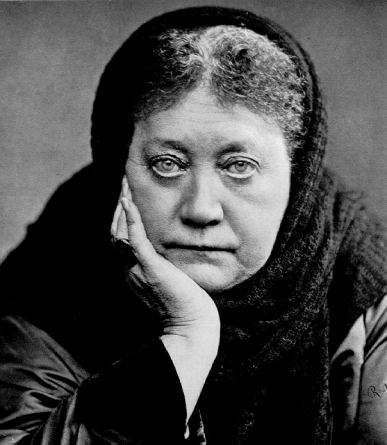Helena Petrovna Blavatsk
Helena Petrovna Blavatsky: The Mystic Who Bridged East and West
🕊️ Helena Petrovna Blavatsky: The Mystic Who Bridged East and West
The Life, Studies, and Spiritual Journey of a Visionary Seeker (1831–1891)
Helena Petrovna Blavatsky — often called Madame Blavatsky — was one of the most influential spiritual thinkers of the 19th century. Born in 1831 in Yekaterinoslav (modern-day Dnipro, Ukraine), she dedicated her life to uncovering hidden wisdom and connecting the spiritual traditions of East and West.
Blavatsky co-founded the Theosophical Society in 1875, an organization that continues to promote the study of comparative religion, philosophy, and science. Her writings, including Isis Unveiled (1877) and The Secret Doctrine(1888), reshaped Western esoteric thought and inspired generations of mystics, scholars, and seekers.
🌍 Early Life and Spiritual Awakening (1831–1850s)
Helena was born into a noble Russian family known for intellectual and literary pursuits. Her mother, Helena Andreyevna von Fadeyev, was a well-known writer and thinker who nurtured her daughter’s curiosity.
Even as a child, Blavatsky displayed intense psychic sensitivity — she claimed to experience visions and unexplained phenomena. Her early exposure to Russian Orthodoxy blended with her fascination for folk mysticism and nature spirits, forming the foundation for her lifelong quest for hidden truth.
🕯️ Journeys Through Europe and the East (1850s–1869)
Determined to seek ancient wisdom firsthand, Blavatsky traveled widely through Europe, the Middle East, India, and Tibet. Her journeys exposed her to many spiritual systems:
Kabbalah & Hermeticism — In Europe, she studied Jewish and Western mysticism, alchemy, and esoteric philosophy.
Hindu Philosophy & Yoga — In India, she immersed herself in Vedanta and yogic disciplines.
Buddhism & Tibetan Occultism — She claimed to have studied with adepts or “Mahatmas” in Tibet, who taught her ancient doctrines of cosmic evolution and spiritual law.
During this period, she began forming the idea of a universal wisdom tradition — an ancient knowledge underlying all religions.
🔮 Occultism and Spiritualism (1870–1874) – Helena Petrovna Blavatsky
In the early 1870s, Blavatsky moved to the United States and England, where she became deeply involved in Spiritualism — a movement centered on communication with spirits through mediums and séances.
She was fascinated by the intersection of psychic phenomena and spiritual philosophy. However, unlike many spiritualists, Blavatsky sought to explain rather than exploit these experiences.
Her collaboration with Colonel Henry Steel Olcott, a lawyer and journalist interested in psychic phenomena, marked a turning point. Together, they investigated spiritual manifestations and began shaping what would become the Theosophical Society.
🕉️ Theosophical Society and the Synthesis of Ancient Wisdom (1875–1891) – Helena Petrovna Blavatsky
In 1875, in New York City, Blavatsky, Olcott, and William Quan Judge co-founded the Theosophical Society with three main aims:
To form a nucleus of the universal brotherhood of humanity.
To encourage the comparative study of religion, philosophy, and science.
To investigate unexplained laws of nature and the powers latent in humanity.
Blavatsky’s major writings — Isis Unveiled (1877) and The Secret Doctrine (1888) — sought to unite ancient wisdom traditions with modern scientific thought. She argued that all religions share a common source — the “Secret Doctrine” of divine truth passed down through ages.
Her later years were spent between India and Europe, where she trained new students and worked closely with Annie Besant and other emerging leaders.
📜 Timeline of Studies and Collaborations – Helena Petrovna Blavatsky
| Period | Location | Focus of Study | Collaborators |
|---|---|---|---|
| 1831–1850s | Russia | Orthodox faith, folk mysticism, psychic sensitivity | Family influence |
| 1850s–1869 | Europe, India, Tibet | Kabbalah, Hermeticism, Hinduism, Buddhism, Tibetan occultism | Eastern adepts, European occultists |
| 1870–1874 | US & London | Spiritualism, mediumship, occult science | Henry Steel Olcott, spiritualist circles |
| 1875–1891 | US & India | Theosophy, comparative religion, metaphysics | Olcott, William Q. Judge, Annie Besant, “Masters” |
✨ Legacy
Helena Blavatsky’s influence extends far beyond the 19th century. Her Theosophical vision paved the way for modern spiritual movements, including New Age philosophy, esoteric Buddhism, and Western mysticism.
She inspired figures as diverse as Annie Besant, Jiddu Krishnamurti, and even modern psychologists who saw value in integrating spirituality with human development.
Despite controversy and skepticism surrounding her psychic claims, Blavatsky’s work remains a cornerstone for anyone studying comparative religion, esotericism, or spiritual synthesis.
Conclusion
Helena Petrovna Blavatsky lived between worlds — East and West, science and spirit, reason and revelation. Her tireless pursuit of hidden wisdom and her conviction that all faiths spring from a single divine source continue to challenge and inspire seekers today.


